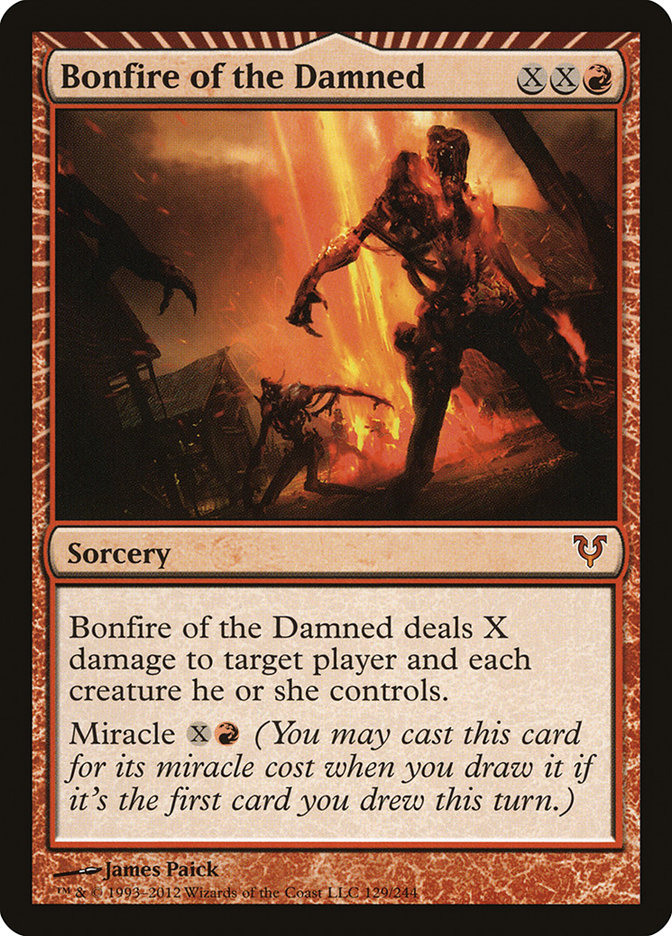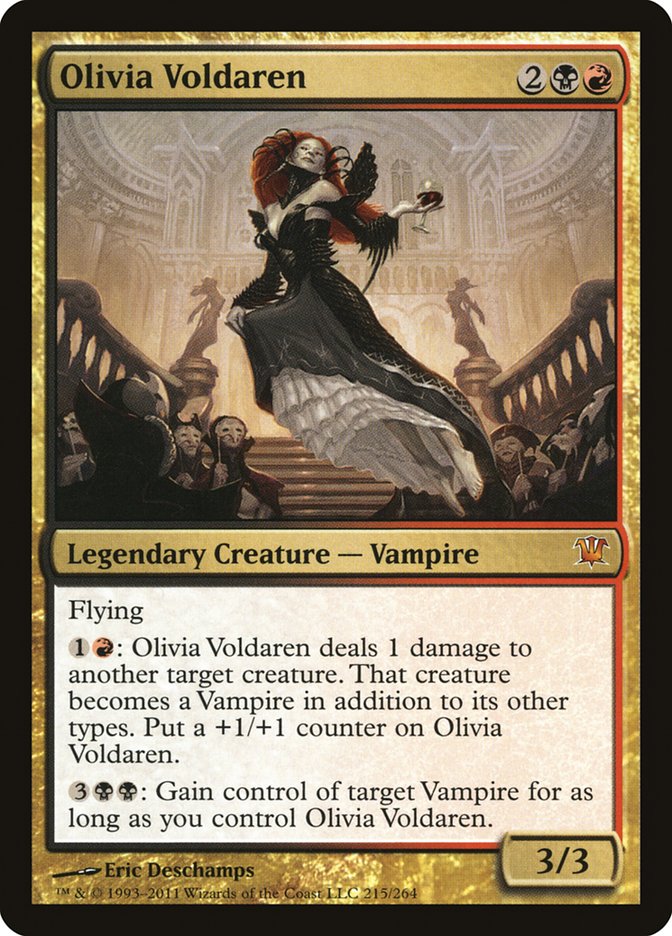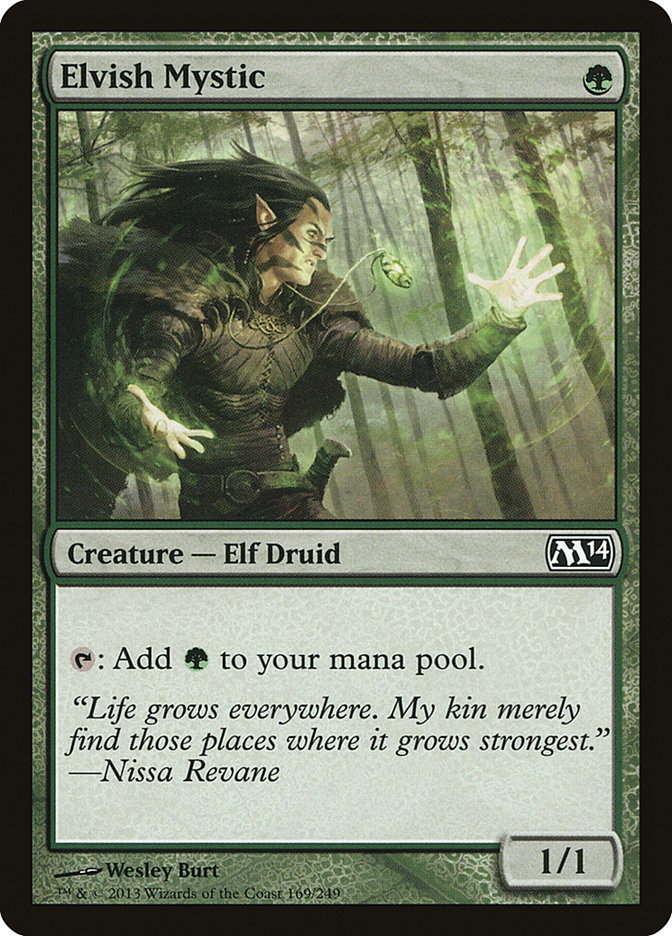This weekend is the StarCityGames.com Open Series featuring the Invitational in New Jersey. The Invitational is one of the greatest tournaments around, offering a chance to play for a prize pool eclipsing anything short of a Pro Tour or the World Championship. With sixteen rounds spread over two days of play before a cut to the Top 8, it’s pretty much the closest thing you’re going to find to a Pro Tour experience outside of the real thing.
On top of that, it’s a brand new Standard format, with just a single week’s worth of results in the books. New Standard formats are my absolute favorite since they give players a chance to show off all sorts of new strategies made possible by the latest cards. Formats right after the addition of a new core set are particularly exciting since that is the time when the most cards are in the format. Decks are at the peak of their power, and we get to see powerful combinations made possible by the overlapping core sets as well as synergies from the new set and the soon-to-be-departed block.
Unfortunately, I won’t be able to make it to New Jersey this weekend, though I suppose I can’t really complain about the reason. By the time most of you will read this, I’ll already be on my way to Amsterdam for the World Championship. That tournament doesn’t start until Wednesday, but jet lag traveling to Europe is absolutely brutal, so I want to give myself some time to adjust. I’m meeting up with my testing partners in the Netherlands to get some last-minute practice in. I can assure you that even though I won’t be playing in the Invitational itself, I’ll be paying very close attention to the results since Standard is one of the four formats I’ll be playing at Worlds next week and I’m far from settled on a deck.
That’s why I’ve been keeping an eye on what this Standard format looks like so far and thinking about what decks I’d be sure to prepare for if I were making my way to New Jersey this weekend. Even with only a week’s worth of results, there’s a lot of information out there. Let’s take a look at it, shall we?
Creatures (21)
- 1 Bloodthrone Vampire
- 4 Champion of the Parish
- 4 Doomed Traveler
- 4 Blood Artist
- 4 Cartel Aristocrat
- 4 Xathrid Necromancer
Planeswalkers (3)
Lands (23)
Spells (13)

AJ Sacher won the biggest Standard tournament of note so far with W/B Humans, a deck that got a major shot in the arm from M14 with the introduction of Xathrid Necromancer. This deck is able to attack on several different angles, with the ability to steal wins with a fast Champion of the Parish pumped up by Gather the Townsfolk or Doomed Travelers, to grind games out with Lingering Souls; Sorin, Lord of Innistrad; and the aforementioned Necromancer, or to just tear the opponent’s life total to shreds with Cartel Aristocrat and Blood Artist.
That said, this deck clearly has significant weaknesses. I was particularly surprised to see that AJ won his finals match against Jund Midrange since Bonfire of the Damned, Olivia Voldaren, and Curse of Death’s Hold all seem like serious problems for a deck that is heavily reliant on building up a board of one-toughness creatures. I was not at all surprised when I looked at the actual coverage of the finals match and saw that his opponent had mana troubles in the deciding game.
This doesn’t seem like the sort of deck I’d want to bring to the Invitational or to Worlds, particularly not in the wake of its win in Richmond. I expect that cards like Curse of Death’s Hold and Ratchet Bomb will rise in popularity to join the Bonfires and Olivias that are already waiting out there to pick your poor 1/1 Humans apart. I would also not be surprised to see the rise of even more fringe cards like Izzet Staticaster and Electrickery—people go out of their way to make sure they don’t lose to whatever deck is the latest big thing.
That said, if I were set on playing W/B Humans, I’d be sure to come prepared with Intangible Virtue like AJ did. It does a great Crusade impression for a good portion of your deck, and it also makes you dramatically more resilient to Curse and one-damage effects. It won’t help against Ratchet Bomb, but that’s a card you can at least try to play around.
If you’re looking to beat W/B Humans, I’d suggest taking a look at the aforementioned cards but not relying solely on them. It’s easy to think that you’ll beat the token deck with your pingers and then lose to Champion of the Parish, Blood Artist, or Xathrid Necromancer. Come prepared with spot removal as well, like Pillar of Flame and/or Tragic Slip. You know—like Jund Midrange.
Creatures (16)
Planeswalkers (2)
Lands (25)
Spells (17)

Ah Jund. Despite its win, I don’t expect W/B Humans to surpass Jund Midrange in popularity. I’m actually of the opinion that it got more from M14 than most other strategies simply because Scavenging Ooze is so incredibly good. As I’ve mentioned previously, Ooze is pretty much the perfect midrange card. It’s cheap enough to come down early and have an impact, but as the game progresses it has the potential to become powerful enough to fight toe-to-toe with more expensive creatures.
Jund Midrange is the perfect deck to take advantage of the peculiarities of Ooze too since it’s so heavy on removal that you can generally ensure that things are hitting the graveyard for you to eat. It doesn’t hurt that Ooze helps shore up (or even just scare away) the Junk Reanimator matchup, which could previously be a problematic one.
Not only that but Ooze gives you another proactive card to play in the early game. This is important because one of Jund Midrange’s biggest weaknesses is its reliance on Farseek. Without Ooze, you had pretty much nothing that you could play to advance your game plan in the early turns—the only things you could spend your mana on were removal spells. With Ooze in the mix, you’re not quite as dependent on accelerating to your big spells since you can threaten to grow a big Ooze very quickly with as much removal as you’re able to bring to bear.
If I were trying to position myself to have the best chances at beating W/B Humans, Jund Midrange would likely be my go-to deck. As I mentioned before, I was pretty shocked to see that AJ managed to come out of that finals matchup with a win. Jund has all of the tools you need to dismantle the W/B Humans deck in the main and even gets to sideboard in more!
If I were trying to beat Jund Midrange, I’d look toward powerful noncreature threats like Burning Earth. Jund is able to take control of games by leveraging mana-intensive cards like Olivia Voldaren and Thragtusk. If you can nullify Thragtusk’s life gain and make taking control of your creatures an incredibly painful proposition, it seems difficult for Jund to be able to turn the corner, especially if you were able to apply a significant amount of early pressure.
Speaking of pressure (and potential Burning Earth decks), it’s probably no surprise that this deck from the Richmond Top 8 caught my eye:
Creatures (25)
- 4 Elvish Archdruid
- 4 Arbor Elf
- 3 Strangleroot Geist
- 4 Predator Ooze
- 2 Craterhoof Behemoth
- 4 Wolfir Silverheart
- 4 Elvish Mystic
Planeswalkers (2)
Lands (22)
Spells (11)
Sideboard

Richard Nguyen actually posted on my Facebook wall earlier this week that I’d be proud of him for playing Predator Ooze—I told him I’d already checked out his deck long before he linked it to me. It’s no secret that I’m a huge fan of Predator Ooze, and as I mentioned in my first article about M14, I think that it may be poised for a resurgence. The addition of Elvish Mystic means that you have a full eight mana dorks, which makes accelerating out a quick Ooze that much more likely.
I’m actually not sure that Ooze is incredibly well positioned right now given the popularity of Tragic Slip, but I definitely think it’s worth trying. Richard’s deck is kind of like a hybrid between an Ooze deck and the big mana elf deck I suggested in my first M14 article. His deck is much happier to use one of those eight mana dorks ramp into an Elvish Archdruid, which can enable a Garruk, Caller of Beasts as early as turn 3. Garruk is clearly incredibly powerful in a deck like this since once he hits play you can not only keep refilling your hand but threaten to find a Craterhoof Behemoth to just put the game away on the spot.
I’d be pretty wary of playing a deck this reliant on mana creatures right after AJ’s win with W/B Humans. I expect spot removal and one-toughness creature hate to be at a high, and this does not look like a deck that wants to stare down Olivia Voldaren or Curse of Death’s Hold, especially not after its Archdruid dies to spot removal. Ranger’s Guile is a great way to protect your Oozes against Azorius Charm, but it’s much less effective at keeping your early mana creatures alive since you’re frequently tapping out to play them.
I’m curious if this deck could shift somewhat and support an extra color. I’ve always been leery of playing nongreen lands in my Predator Ooze decks, but the four Mutavaults in here make me think that maybe I’ve been overly cautious. Or perhaps the addition of Elvish Mystic means that you can afford to play nongreen lands because you have more green sources with your mana creatures.
This seems like a kind of shell that could easily support Burning Earth and maybe Bonfire of the Damned—two very powerful cards against the last two decks we looked at. It’s possible that Mutavault is better, particularly thanks to its synergy with Archdruid, but a splash seems very easy. You can play the eight duals and a few Mountains and be good to go. Archdruid-powered Bonfires seem like they could be really entertaining.
Maybe something like this:
Creatures (25)
- 4 Elvish Archdruid
- 4 Arbor Elf
- 3 Strangleroot Geist
- 4 Predator Ooze
- 2 Craterhoof Behemoth
- 4 Wolfir Silverheart
- 4 Elvish Mystic
Planeswalkers (2)
Lands (22)
Spells (11)
Sideboard

There are a lot of other possible changes, but this retains the general shell of the deck while gaining access to some really powerful options with Bonfire of the Damned and Burning Earth. Playing red also gives you access to additional spot removal like Pillar of Flame, which as we discussed earlier can help put a nail in the coffin of the W/B Human decks. That deck is what Richard was defeated by in the semifinals. Perhaps with Bonfire and Pillar he would have been able to take it down.
One deck that I’m surprised didn’t have a better showing in Richmond is Naya Midrange. Naya, like Jund, got a huge upgrade with the printing of Scavenging Ooze. The Ooze isn’t quite as good in Naya as it is in Jund because Naya spends more of its mana curving out and doesn’t have as much removal to ensure creatures hit the graveyard. That said, Naya’s biggest weakness in the previous metagame was its horrible matchup against Junk Reanimator, which has seemingly been pushed out almost completely thanks to the introduction of the Ooze.
Here’s the one Naya Midrange list that did make it to the Top 8 in Richmond:
Creatures (29)
- 2 Scavenging Ooze
- 4 Avacyn's Pilgrim
- 4 Huntmaster of the Fells
- 4 Thundermaw Hellkite
- 3 Loxodon Smiter
- 1 Aurelia, the Warleader
- 3 Ghor-Clan Rampager
- 4 Boros Reckoner
- 4 Voice of Resurgence
Planeswalkers (3)
Lands (24)
Spells (5)

I like a lot of what’s going on here, but I can’t say I’m a big fan of Blasphemous Act. Obviously Act is very powerful in concert with Boros Reckoner, but I don’t feel like Naya is the sort of deck that can afford to play highly situational cards like that, particularly in the main. When you’re playing 29 creatures, you’re probably not going to want to wipe the board very often, and all of the times you don’t have Reckoner you’re going to just sit sadly with Act in your hand.
Against many of the popular decks, you can’t even really be sure that you’re going to come out ahead when you Act with a Reckoner in play. W/B Humans, for example, can easily sacrifice to an Aristocrat and Tragic Slip your Reckoner in response, and even if they don’t it’s possible that you lose to their Blood Artist triggers before your Reckoner’s ability even resolves!
One card in Naya Midrange that’s stock I think has gone up significantly is Unflinching Courage. When you’re playing a deck like Naya with few-to-no basic lands, you’re going to have people bringing in Burning Earth against you. I don’t think it’s right for most opponents to do so since you have so many cheap high-impact cards like Loxodon Smiter that you could already have in play before they’re able to spend the four mana to cast Burning Earth. Regardless, you’ll run into people who try to get you with it, and Unflinching Courage is one of the best ways to get them back. If you’re able to suit up just about anything, you can easily gain enough life to offset the Burning Earth damage you’re taking, at least long enough for your giant lifelinker to kill your opponent.
I also really like the fact that Naya Midrange gets to play with both Bonfire and Ray of Revelation. Bant Hexproof may not have had a strong showing in Richmond, but it’s certainly a deck that people are going to play. Those are two of the best options against it, especially together. Sometimes your opponent can get an Invisible Stalker or Geist of Saint Traft just out of Bonfire range before you’re able to sweep their board, and having access to Ray to wipe off their toughness-boosting enchantments makes that job a whole lot easier.
If I were headed to the Invitational this weekend, I’m pretty sure it would be with something like G/R or Naya. Coming from me that’s hardly shocking, I know, but I feel like both Scavenging Ooze and Bonfire of the Damned are so good right now that it seems almost crazy not to play them. I could also see myself playing Jund, but I’d probably play a more aggressive style of Jund deck like the one I played at Grand Prix Miami, though Falkenrath Aristocrat does not seem like where I’d want to be right now given just how popular Tragic Slip seems to be. Thankfully, I have a little more time to figure out what I’m going to play at Worlds and get to see the results of the Invitational to help guide my decision.
What do you think is going to come out on top in the new Standard?
Until next time,
bmk
P.S. I won’t be writing here next week since I’m going to be busy traveling and battling in Amsterdam and whatnot, but I may be posting updates to my blog http://bmkgaming.com/ if you’re interested in that kind of thing. Check out my latest entry to hear about the idea I have for a new way to share my tourney preparation experience!




